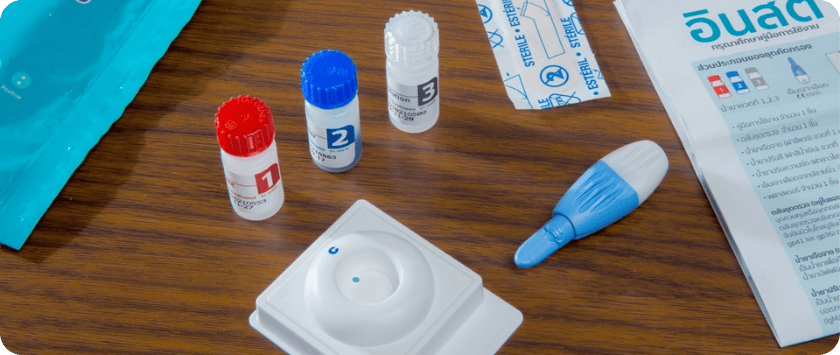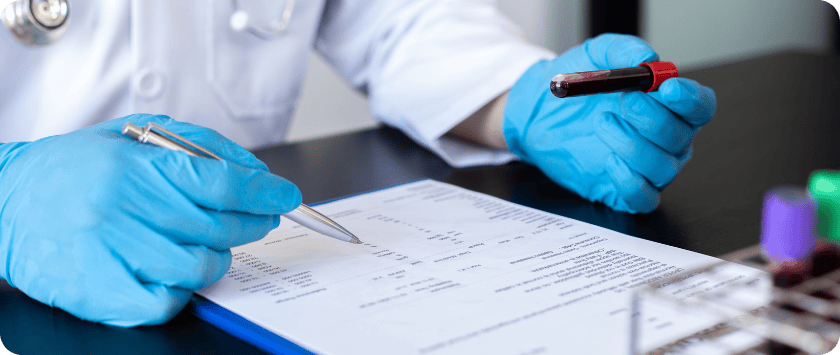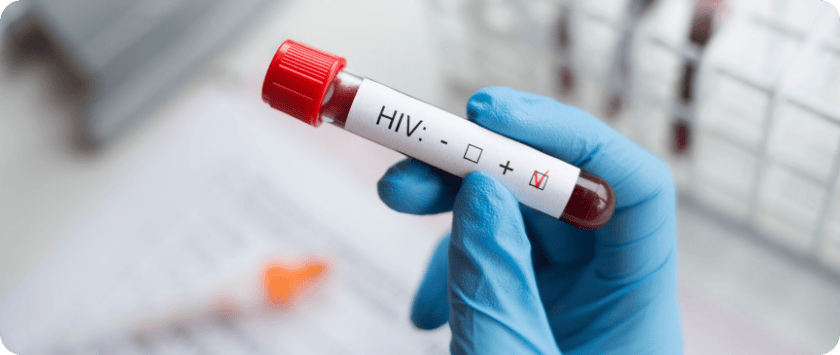HIV Self-Testing
You can easily know your HIV status by using an HIV self-test kit. It’s a convenient option that allows you to test at a time and place where you feel safe and comfortable. Don’t forget to talk openly with your partner about HIV testing and knowing each other’s status — mutual understanding is key to a safe and healthy relationship.
No matter what your test result is, remember that you are not alone. There are many organizations and services available to support you, provide counseling, help you plan for care, and guide you in HIV prevention. You can easily find services near you by using the local sexual health service locator here.

What Is HIV Self-Testing?
HIV self-testing, also known as rapid self-testing, is a way to check for HIV antibodies in the comfort of your own home or a private setting.
Most self-tests can deliver results in about 20 minutes.
Types of HIV Self-Tests Available
In Thailand, there are two main types of HIV self-test kits approved by the Thai Food and Drug Administration (FDA):
1. Fingerstick Blood-Based HIV Self-Test
- How it works: You use a lancet to prick your fingertip and collect a small drop of blood, which is placed on a test device that comes with the kit.
- Time to results: Approximately 1–20 minutes depending on the brand.
- Accuracy: Sensitivity ≥ 99.5%, Specificity ≥ 99%
- Examples of test kits:
- INSTI HIV Self Test – Results in 1 minute using just one drop of blood.
- CheckNOW® HIV Self-Test – Results in 15 minutes; third-generation technology detecting antibodies to HIV-1 and HIV-2.
- Precautions:
- Not recommended for individuals with bleeding disorders.
- Not suitable for people already on HIV treatment, as it may result in a false negative.
- Results must be read within the specified time frame for accuracy.
2. Oral Fluid-Based HIV Self-Test
- How it works: You use a swab to collect oral fluid by rubbing along your upper and lower gums, then place the swab into a testing solution.
- Time to results: Approximately 20 minutes, depending on the brand.
- Accuracy: Sensitivity ≥ 99%, Specificity ≥ 98%
- Example of test kit: OraQuick® HIV Self-Test – Oral fluid-based test with results in 20 minutes.
- Precautions:
- Avoid eating or drinking at least 30 minutes before testing.
- Not recommended for those with dentures or oral devices that cover the gums.
- Results should be read within the specified time window for accuracy.
Note: HIV self-test kits are considered screening tools. If your result is positive (Reactive), you must visit a healthcare provider or HIV testing clinic for confirmatory testing and appropriate care.

What Does a Negative HIV Test Mean?
A negative result doesn’t always mean you are HIV-free. This could be due to the 'window period'—the time between potential exposure and when the test can detect HIV antibodies.
If you test after a possible exposure and get a negative result, repeat the test after the window period for the specific test you used.
If the repeat test after the window period is also negative and you’ve had no further risk, then you are not infected.
However, if you continue engaging in high-risk behavior—such as:
- Unprotected sex
- Sharing needles or injection equipment
You should:
- Get tested at least twice a year.
- Consider preventive measures like PrEP.
Does My Negative Result Mean My Partner Is HIV-Negative Too?
No. Your HIV status only reflects your health, not your partner's.
HIV isn’t transmitted every single time someone has sex or shares needles, and risk levels vary by behavior and exposure type.
A negative test can’t confirm your partner’s status. The best approach is open communication.
Talk with your partner about HIV status, risk history, and consider getting tested together to build mutual trust and safety.

What Does a Positive HIV Test Mean?
If your self-test result is positive, you must get a confirmatory test.
If you test positive using a self-test or a community-based program, visit a healthcare provider immediately for follow-up testing.
If you test at a hospital or lab, and the initial result is positive, the same sample will typically be used for confirmatory testing.
If the confirmatory result is also positive, it means you are living with HIV. You should enter care as soon as possible for effective treatment and to protect your health long-term.
HIV Test Window Periods by Type
- Antibody Test: This type of test typically detects HIV 23 to 90 days after exposure. Most rapid tests and self-test kits fall into this category.
- Antigen/Antibody Test (fingerstick blood): This test can usually detect HIV 18 to 90 days after exposure.
- Antigen/Antibody Test (venous blood, lab-based): This method can detect HIV 18 to 45 days after exposure and is commonly used in clinical laboratories.
- Nucleic Acid Test (NAT): This is the earliest test for detecting HIV, typically identifying the virus 10 to 33 days after exposure.
If you test during the window period and get a negative result, repeat the test after the recommended period. Understanding what your result means will help you make informed decisions for your health and future.
